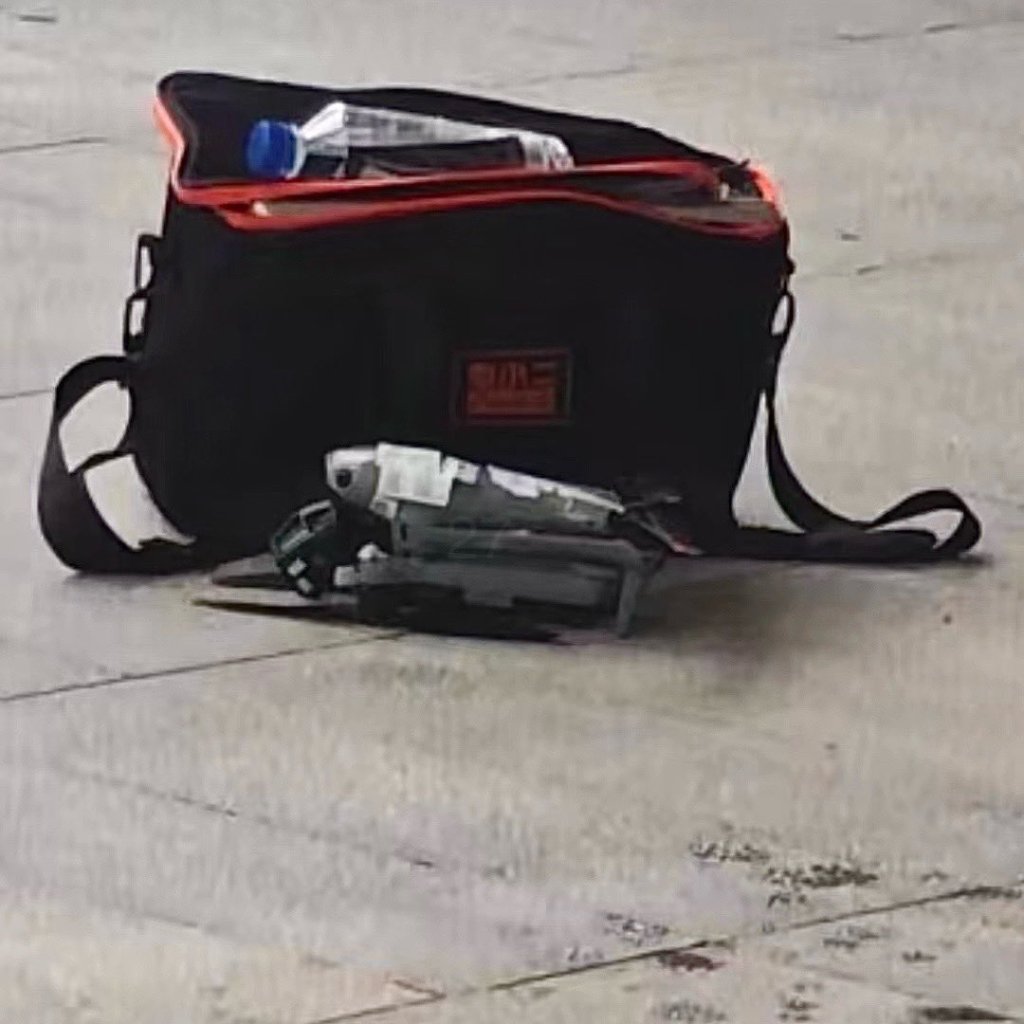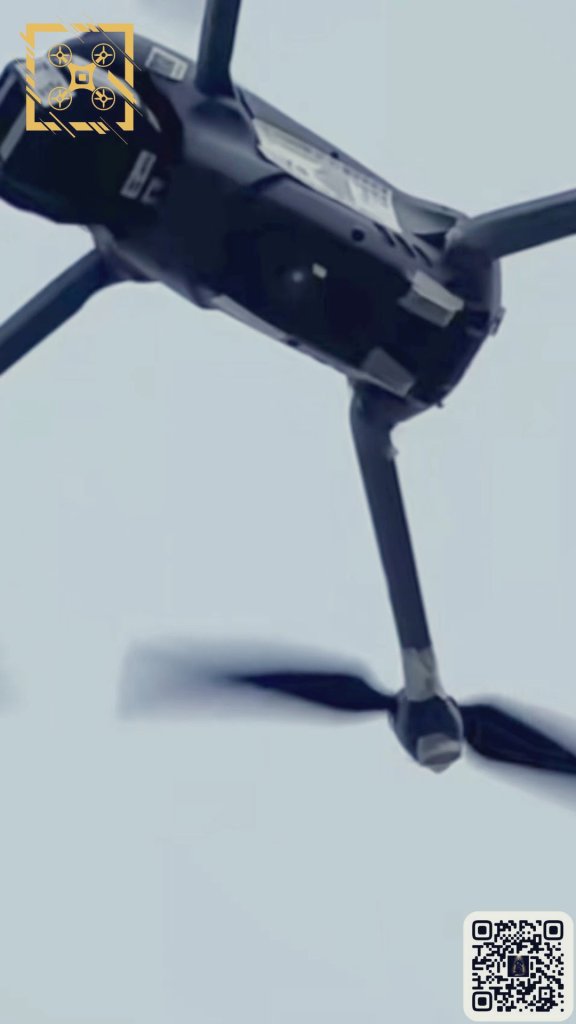Despite all of the adversity DJI is facing, it does not seem to be slowing the drone industry titan down when it comes to manufacturing new UAV technology. According to at least two sources I stumbled upon on X (formerly known as Twitter), there is a new consumer drone that has leaked and it looks like it could be the DJI Mavic 4…or maybe the DJI Air 3S?
We’ll work together to figure out which drone DJI seems to be preparing to release next, what we might be able to expect from it, how much it might cost, and when we might see it on shelves in this article!
First things first, what drone are we dealing with?

Let’s just get this out of the way because it’s important we talk about what drone is coming down the pipeline. Upon first exposure, I read a tweet from friend of The Drone Geek, Jasper Ellens, who indicated this was likely the Mavic 4. While I trust 99% of what I read on Jasper’s timeline, this is one of the few instances where I believe he is wrong on his assertion regarding a DJI product leak.
When we examine the body of the drone, as shared by Igor Bogdanov (@Quadro_News on X), it becomes extremely clear that the drone being leaked shares a fuselage design more closely related to the Air 3 in size and general aerodynamic form factor. Additionally, the housing for the camera is the same design we saw on the Air 3, but seemingly larger. These two factors combined with the release regularity of the Mavic series drones (every 2.3 years on average) versus the release regularity of the Air series drones (every 1.6 years on average — not including the potential of this drone, which would bring the average down to every 1.5 years), indicates that we are much more likely to see a new version of the Air rather than a new version of the Mavic this year.
So, to sum up the last two paragraphs as concisely as possible: this drone is almost certainly going to be the DJI Air 3S or DJI Air 4…but my money is on an Air 3S to keep with the nomenclature we saw starting with the Air 2 drones.
What can we expect from the DJI Air 3S?

This part of the article is where my thoughts become laden with pure speculation, so take everything I am about to say with a grain of salt…make it the pink Himalayan salt just to be safe. What can we expect performance-wise from the Air 3S? When we look at the upgrades made from the Mavic Air 2 to the Air 2S and set them next to the specs we saw on the Air 3, we can begin to draw at least some educated inferences as to what kind of upgrades we might see:
- Sensor Size: A big hitching point with the Air 3 was that it did not have the 1-inch sensor that many of us grew fond of on the Air 2S. It seemed like a relative step backwards despite the fact it was still a sizeable 1/1.3″ sensor that utilized stacked-sensor technology and Bayer processing. I believe we will see a 1-inch sensor on the Air 3S that will incorporate the stacked-sensor technology and the Bayer processing…whether they upgrade the telephoto sensor from 1/1.3″ to 1-inch will be interesting though and only time will tell.
- Video Resolution: Another sensitive topic that a lot of consumers felt DJI backslid on from the Air 2S to the Air 3 was the video resolution capabilities. The Air 2S was capable of 5.4K at 30 frames per second while the Air 3 topped-out at 4K at 60 frames per second in the normal video shooting mode. While 4K is still plenty of resolution in today’s day and age (especially for wide-shot landscape videography), I think end users would have preferred to see at least an equivalent 5.4K resolution capability out of the Air 3, but to be honest I don’t know that this is something we will see in the Air 3S. It would be nice to get a 5K video resolution at 60 frames per second, but I’d look for DJI to stick in at 4K and maybe up the frame rate capabilities to 120 frames per second in the normal shooting mode.
- Photo Resolution: Look for DJI to maintain its typical offerings from its drones with a 1-inch sensor by ratcheting up the Air 3S’s photo resolution from 12-megapixels (as seen on the Air 3) to 20-megapixels. Additionally I would expect the Bayer processing to still play a role in upscaling and denoising photos to 48-megapixels natively in the camera if the user so chooses.
- Flight Time: This is an interesting spec when we consider the Mavic Air 2 to Air 2S upgrade. When DJI released the Air 2S, the average flight time actually dropped from 34-minutes per flight on the Mavic Air 2 to 31-minutes per flight on the Air 2S. What was so odd about this was that the drones utilized the same exact battery. Many attribute this reduction to the increased technological capabilities of the Air 2S, which largely required more power than the hardware on the Mavic Air 2. I would look for the same type of reduction in flight time to occur in the Air 3S as the build of the drone itself seems to be identical with the Air 3, meaning I believe both drones will use the same battery platform. Expect at least a slight reduction in total flight time in the Air 3S, but don’t fret…because your starting point was 46-minutes from the Air 3…that leaves you plenty of flight time if the reduction is proportionate to the one we saw between the Mavic Air 2 and Air 2S.
- Range/Controller: I would not expect any significant upgrades in the controller or transmission system for the Air 3S. Expect to see Ocusync 4 to be onboard the Air 3S, just as it was when it was first introduced onboard its predecessor the Air 3 in 2023. This will give end-users a maximum range of 20km (12.4 mi).
How much will the Air 3S Cost?

Short, sweet, and to the point: I expect the Air 3S to cost around $1,200 USD for the drone, a controller, and a single battery. Pricing will increase as you add more bells and whistles like the Fly More Combo and the DJI RC2 instead of the DJI RC-N2.
When can we expect the Air 3S to be available?
Again, this projection is fraught with my bias and anecdotal speculations, so take it with a grain of salt, but I do believe we will see the Air 3S before the end of July of this year. Based upon my experience with leaks, it has consistently seemed to take about 30-45 days from the time the information “leaks” (I don’t believe these are unintentional anymore and actually a guerilla marketing effort by DJI) to the time the drone becomes available for purchase. When looking at the release of the Air 3 (July 2023, it would make sense that DJI would aim for the 1-year mark on its newest version of the Air drone. It would also time out nicely as these leaks were first “discovered” in early June, which would make 45 days right around the end of July. There is a chance it could push into late August, but even then we’re not far off our average release mark at closer to 60 days total.
No matter where the release ends up landing, if you plan on purchasing the Air 3S, I would start pinching your pennies now to scrape enough together to make the purchase. It will not be long before demand for it is at an all-time high and the drone itself will be within reach. My guess for an exact date is July 23, 2024.
Bonus section: will it be worth upgrading?
In my opinion, if you are using drone technology as old as an Air 2S or older, it will absolutely be worth the upgrade, especially while DJI is still legal for purchase in the United States. If you are using something as new as the Mini 3 Pro or newer, then there is no need to upgrade to the Air 3S as your drone is more than capable of performing as well as anything on the market right now in the consumer/prosumer category.
Who am I to stop you though? If you have a Mini 4 Pro, but also have $1,200 burning a hole in your pocket, knock yourself out and grab an Air 3S! It’s your life, do what you want with it!
—
If you enjoyed this article and the content I create, please consider supporting me by clicking the button below! Every little bit helps me to grow The Drone Geek and create engaging and informative content for you to enjoy.
The option to contribute is totally voluntary and I will NEVER block out anyone who views my content with a paywall. If you cannot contribute monetarily, you can support me in other ways! Please share this article as well as any of my other content pieces on my social media platforms. Consider subscribing to my blog and YouTube channel as well as following me and liking me on Instagram, Twitter, and Facebook.




